The seven deadly tech recruitment sins

In the ideal world, your tech talent pipeline is full of candidates and when you select one and tell them you’re interested, they’re game. Once you make an offer, they gladly say yes. Fast forward a couple of days, they sign the employment contract and you live happily ever after. In reality, you have to spend hours sourcing, personalizing and generally need to bend over backwards to get your message across. With the high competition for software developers these days, it takes a considerable amount of time and effort to lure a candidate to join your company. In other words, the recruitment process in IT is rife with challenges, even to seasoned recruiters, not to mention those guilty of some of the biggest tech recruitment sins.
- Tech recruitment sins: should you be worried?
- Sin #1: focusing on quantity, not quality
- Sin #2: not following up aka “The Silent Treatment”
- Sin #3: rejecting people in a rude way
- Sin #4: not speaking the same language
- Sin #5: “esoteric technical questions”
- Sin #6: no employer brand to support you
- Sin #7: unconscious bias
- Conclusion
Tech recruitment sins: should you be worried?
Despite having their hands full, recruiters often have no results to show because the candidate is snatched by someone else or decides to stay with their current employer. There are, however, ways to eliminate some of the difficulties from the process. As Nathaniel Branden said, “Awareness is the first step to change. The second step is acceptance.” Understanding the tech recruitment sins helps you realize where the biggest challenges lie and avoid them whenever possible.
Here are the seven deadly tech recruitment sins which decrease your chances of finding stellar programmers and ideas on how to steer away from them. Please bear in mind that the aim of this article is to identify room for improvement rather than scorn. Without further ado, let’s take a look.
Sin #1: focusing on quantity, not quality
Cutting and pasting the same email or InMail until you pass out is highly ineffective. Not only is it detrimental to your employer brand, it also tarnishes your reputation as a recruiter.
Have you ever heard of “horn effect”? It’s a cognitive bias opposite to the “halo effect” causing your perception “to be unduly influenced by a single negative trait.” Halo and horn effect have a massive influence on the way we look at people and this includes the recruitment process. In essence, when a developer gets a sloppy outreach message from a recruiter, they may automatically assign negative traits to the company they’re representing.
Solution? Target people who really fit your criteria and make sure you personalize your messages as much as possible. Show the developers that you are thorough and you’ve done your research. If someone provides their email in their profile, asking for it via a LinkedIn message doesn’t tell that person you’ve put in the time to read their profile carefully. Given that tech recruiters are often the dev’s first touchpoint with the organization, you must do all it takes to show it in good light.
According to Brendan Browne, Vice President of Global Talent Acquisition at LinkedIn, you should target people connected to your brand in one way or another to increase your chances of receiving a response.
In essence, being able to find developers whose skills and expertise match your job requirements comes down to outstanding sourcing abilities. If you need to polish your sourcing skills, I highly recommend our Tech Recruitment Course with a whole ebook devoted to sourcing techniques and tricks.
Sin #2: not following up aka “The Silent Treatment”

As LinkedIn reports, “Hiring talent has become highly transactional. The tedious candidate searches, the endless scheduling, and the repetitive screening are inefficient and mind-numbing.” As a consequence, both parties involved in the process tend to forget about one very important factor, and that’s being a nice person who treats people respectfully.
Candidates get frustrated with not hearing back, not only when they send their CV, but also when they leave the interview room. In fact, a staggering 72% of employees say that not getting notified about the status of their application or decision made leads to a negative impression of an employer. From the perspective of the candidate, they have a perfectly pleasant phone call or interview and never hear back from the recruiter.
In many cases, you don’t intentionally leave unsuccessful candidates in the dark but when you want to let them know about their status, life happens – you’re told to go to a meeting, reschedule an interview, report to your supervisor or deal with an urgent matter. As a result, you prioritize and complete the most pressing tasks first. And once you deal with them, you get swamped with work again. It’s a vicious circle.
There’s another interesting follow-up statistic which can help you become better at what you do. A CareerBuilder survey analyzing common job seeker pitfalls found that 37% of employers don’t follow up with an employer after they applied. This means that each developer who actively contacts you to inquire about the possibility or apply will only try once and then give up. Given the number of tasks, recruiters juggle each day, it’s not difficult to miss that one email, so it’s important to devise a functional way of tagging people who you need to email (even when it’s just “after I finish this quickly”).
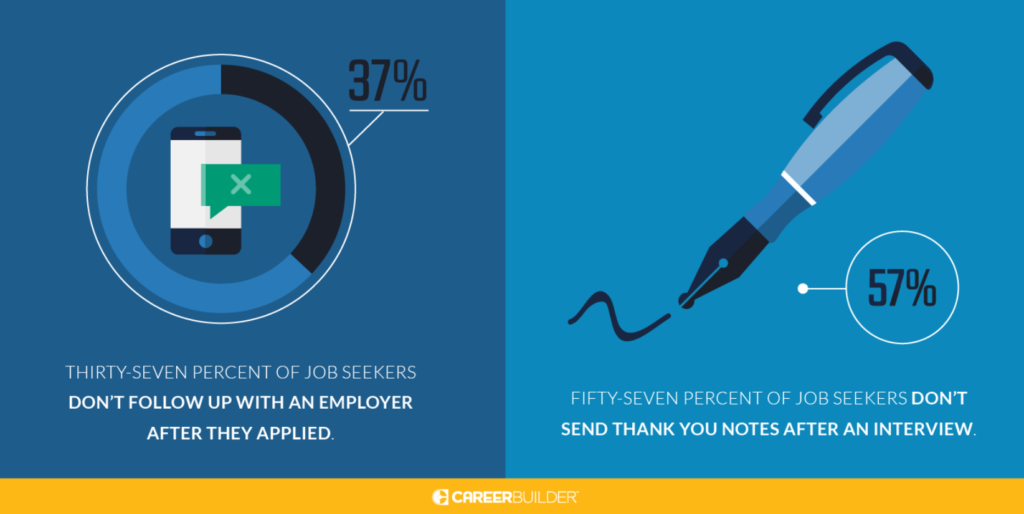 Source: CareerBuilder
Source: CareerBuilder
It’s not just candidates who don’t like the silent treatment – recruiters feel the pain, too.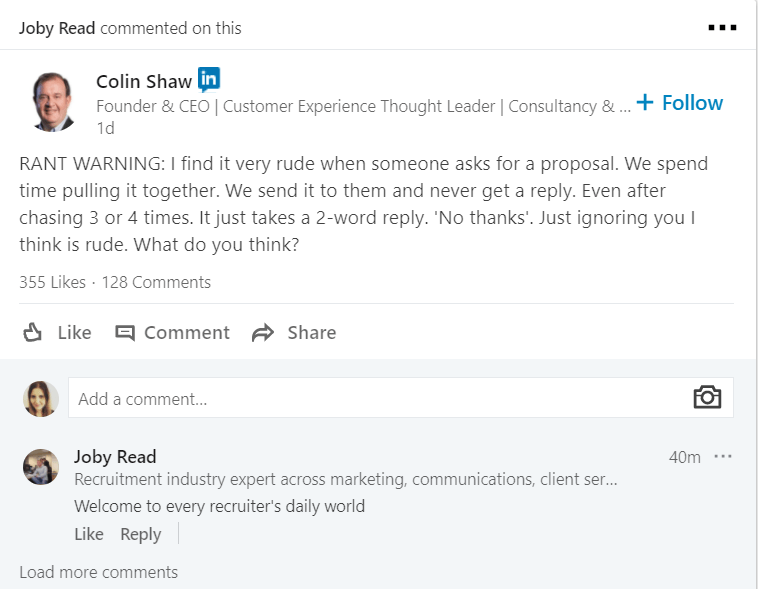
Sin #3: rejecting people in a rude way
When you do find a viable candidate, you might be tempted to analyze every single word you’re saying to them and try to craft the perfect message. The question is, are you as nice to candidates you reject?
The truth is, most software developers going through your recruitment process get rejected. For that reason, it’s important for your company to devise a functional system of notifying candidates that don’t get hired for the position about their status. Why? Because it makes you lose candidates from your talent pipeline. According to CareerArc “Candidates who are NOT informed of the status or decision of their application are 3.5x less likely to re-apply to that company that declined them”. It’s hardly surprising, right? What goes around comes around, after all.
 Source: CareerArc
Source: CareerArc
Let’s face it, rejection is miserable but it’s inevitable in the recruitment process. The way you reject someone tells a lot about your company culture.
Moreover, candidates you’re turning down might be an excellent fit for a different position down the road. If you treat them disrespectfully, you blow your chances of picking up where you left off.
Sin #4: not speaking the same language
It’s understandable that technical recruiters don’t have the skills listed in every job description they hire for. Nobody expects you to be able to write code as well as source, screen, interview and interact with candidates. If you do all of these things equally well, you’re a gem.
Despite differences in their professional roles, technical recruiters and developers should be able to communicate. As an IT recruiter, you should never think “I don’t understand any of the technical stuff and it’s not my job to do that”. Instead, do your best to learn the basic jargon.
PRO TIP: use our glossary of IT terms for Tech Recruiters to do that (you’re welcome).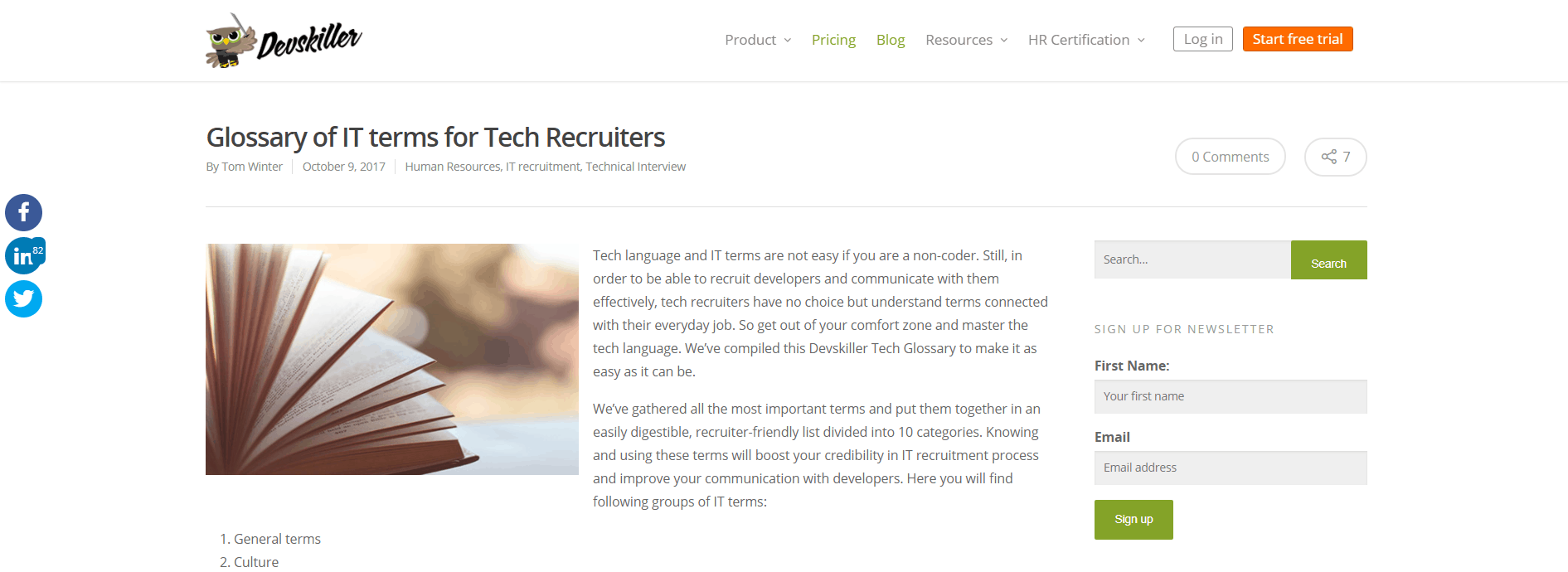
Sin #5: “esoteric technical questions”
Companies who fail to introduce screening tools which can objectively judge whether a software developer has the skills required to do a given job or cannot consistently make great hires. That said, some organizations are still asking what Steve Brownlee calls “esoteric technical questions” which don’t verify your candidate’s experience and level of expertise at all and give you an insight into what they can do. Assessing programming skills in a live environment such as a coding test is an objective, bias-free method of making sure you hire a candidate can really code and has the right mindset to boot.
In fact, screening and interviewing (e.g. via code pair with video) are one of the fields tech recruitment software is especially beneficial in (screening candidates comes second on LinkedIn’s list of areas where AI is most helpful).
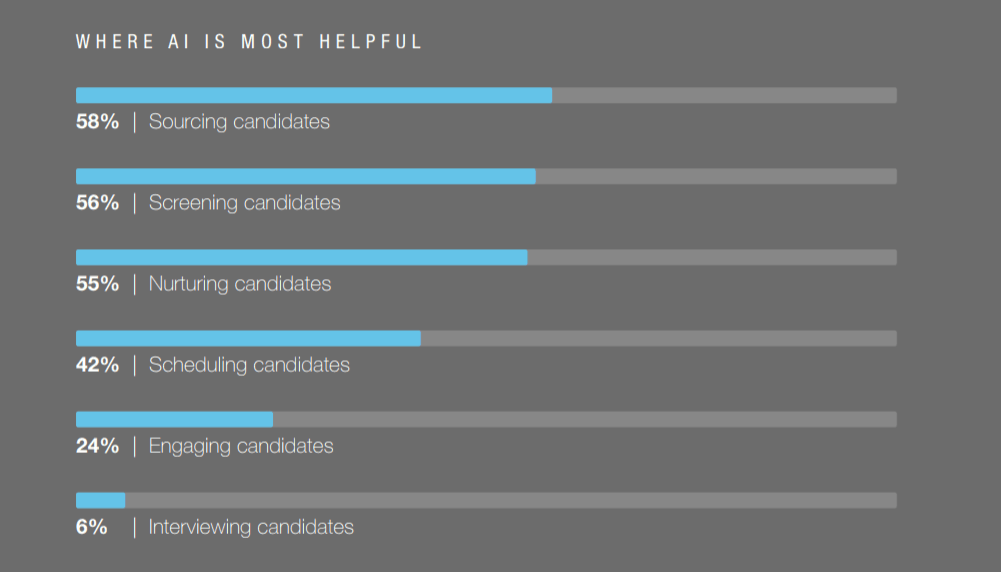 Source: Linkedin
Source: Linkedin
You shouldn’t be afraid of the new wave of tech recruitment software because it helps automate some of the processes so that your team can interact and bond with the candidates instead of focusing on repetitive manual tasks all day. For optimal results, make sure you select a platform which tests the candidates’ knowledge of languages, frameworks, and libraries and allows them to use the resources they normally use at work.
Sin #6: no employer brand to support you
The majority of tech recruiters are constantly up against well-known and widely respected companies. As a consequence, they need to find ways to make up for their lack of recognition.
There’s a lot at stake here as strong employer brand in tech comes with a number of benefits, including recruiting advantage and lower salary increase expectations (Melián-González & Bulchand-Gidumal via PR Newswire).
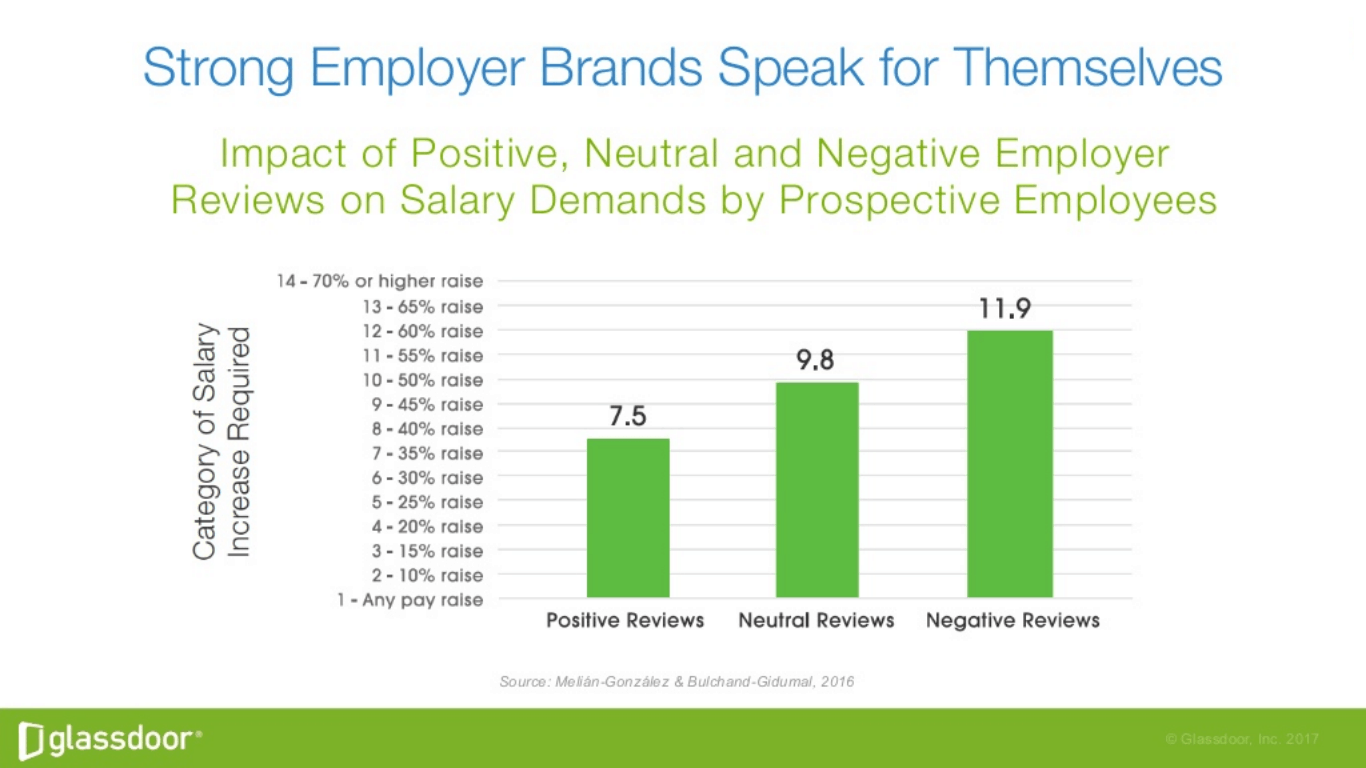 Source: Slideshare
Source: Slideshare
Remember that most software developers are passive candidates, so you need to find a way to convince them to make a move. According to LinkedIn data, being uncertain what it’s like to work for a given company is the #1 roadblock to making a job move. When you first reach out, they either already know your company or start Googling. In that case, their opinion of your business is shaped by everything they come across, be it reviews, opinions on discussion groups or social media mentions. According to Glassdoor, 61% of users of the site say they look for “company reviews and ratings before making a decision to apply for a job”.
Sin #7: unconscious bias
We’re naturally wired to be biased, but that doesn’t mean we should let our biases own us. Due to their nature, relying solely on traditional interviews is no longer an option. One of the biggest shortcomings of the traditional interview is that it relies on the biases of interviewers (according to 42% of respondents).
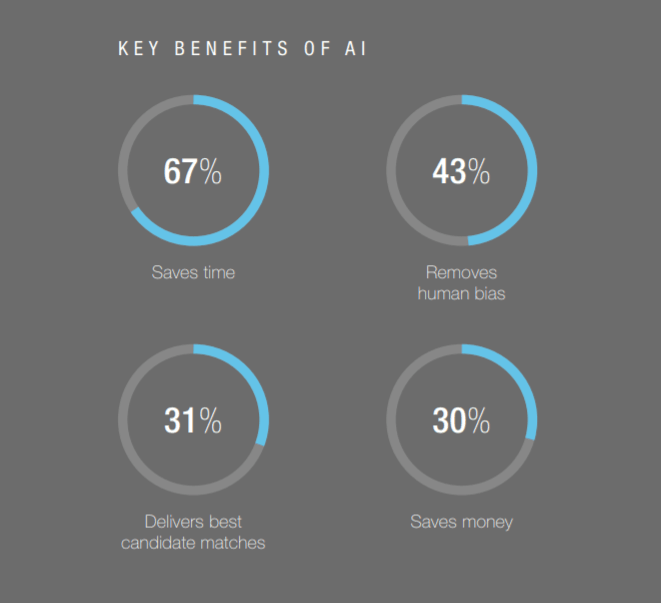 Source: Linkedin
Source: Linkedin
In fact, human bias leads to homogenous teams which according to McKinsey & Company are correlated with lower profitability.
 Source: McKinsey & Company
Source: McKinsey & Company
One of the ways to minimize the effect of unconscious bias and create more diverse teams is to use recruitment AI. In LinkedIn’s Global Recruiting Trends 2018: The 4 Ideas Changing How You Hire, recruiters “shared that AI is a bold disrupter” which not only saves them time (67%) but also removes human bias (43%) from the process.
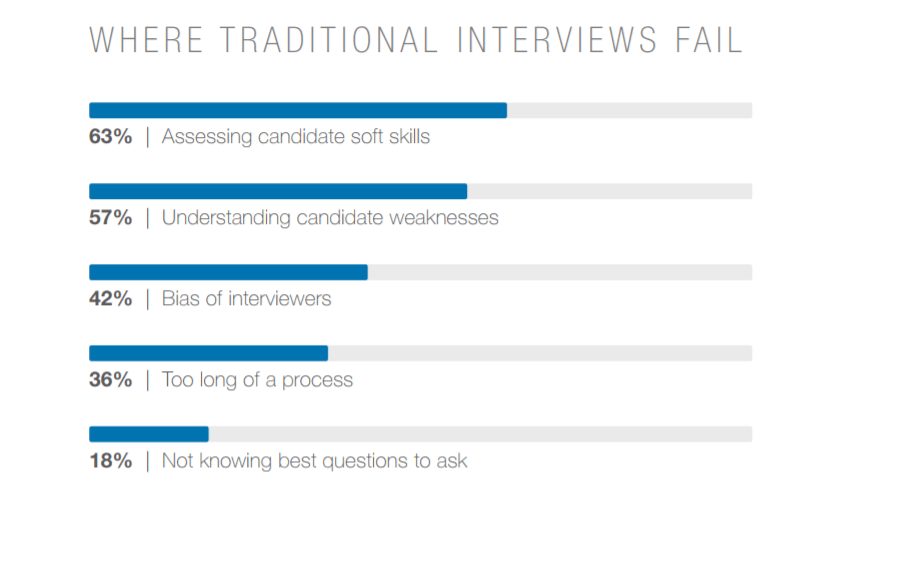 Source: Linkedin
Source: Linkedin
There are a number of ways you can prevent bias in your recruitment process. These include:
1. Using an objective technical screening platform which evaluates coding skills
This is the best way to single out top performers, as opposed to asking random technical questions or conducting whiteboard interviews.
2. Hiring through consensus
The best way is to introduce multiple touchpoints with the candidate involved in the recruitment process and making
3. Standardize your recruitment process
As Robin Schwartz of MFG Jobs points out, “Consistency is key in removing bias from hiring processes.” Amen to that.
4. Show candidates you value diversity
According to Linkedin, you use “images of diverse employees in your materials, present diverse interview panels, talk about ERGs, and recruit at schools with diverse student bodies”.
Conclusion
Despite our best intentions, we make mistakes. We are inundated with work and sometimes cut corners to make sure we fill open positions as quickly as possible. We prioritize because we don’t want our competitors to snatch away the candidate we’re about to make an offer to.
A question to ask at this point is this: is the fierce competition for tech talent really a bad thing? Not really. It makes you become better at what you do and pushes you to be more creative in the way you identify and attract software developers. The one thing to remember here is that acknowledging that you’ve made a mistake can actually lead to professional growth.
Have you ever committed any of these tech recruitment sins and how did you make things better?
Share post